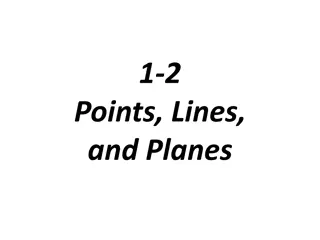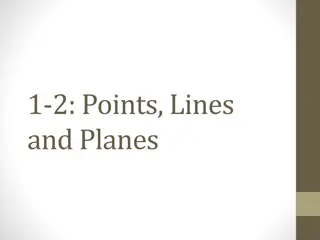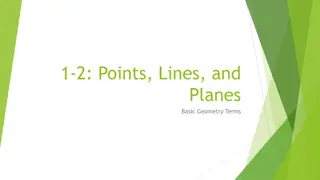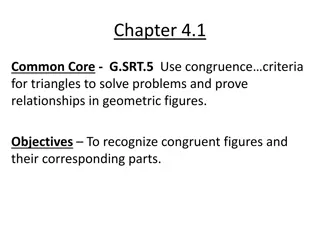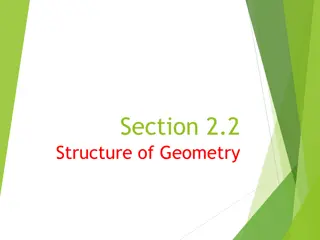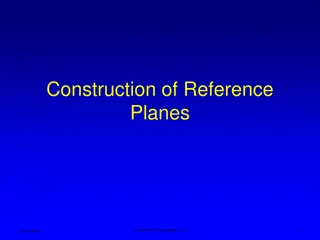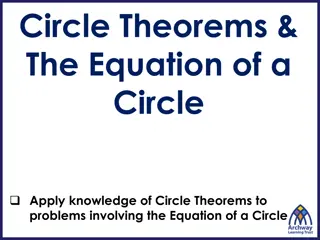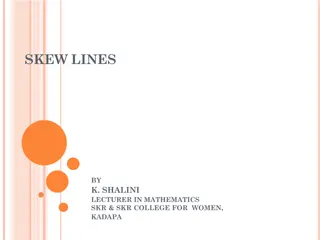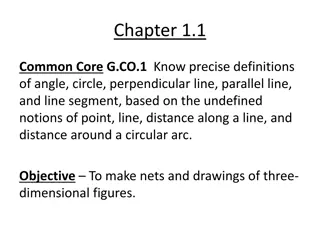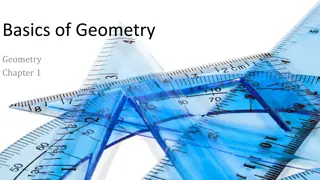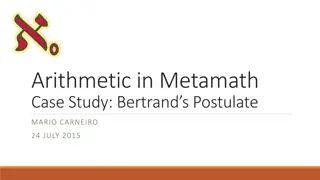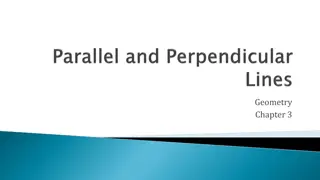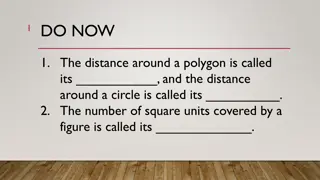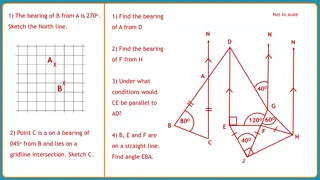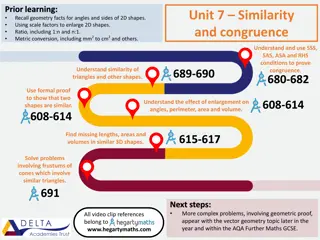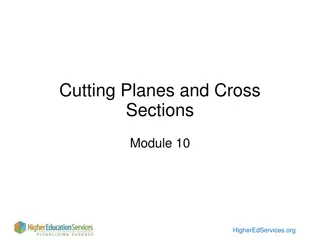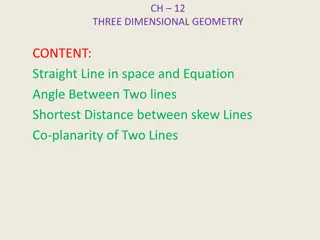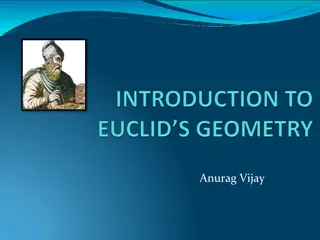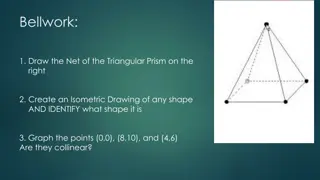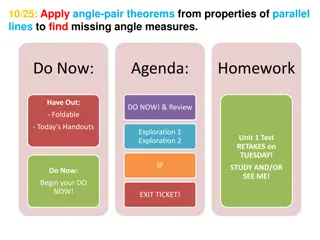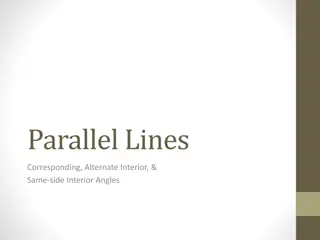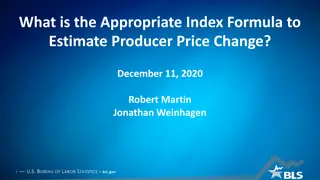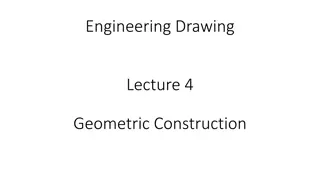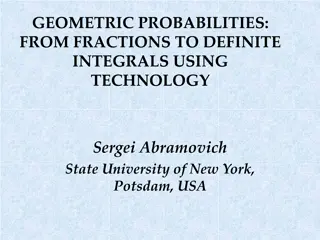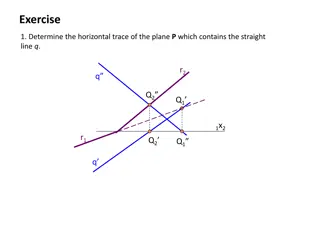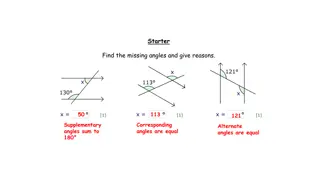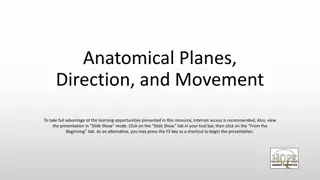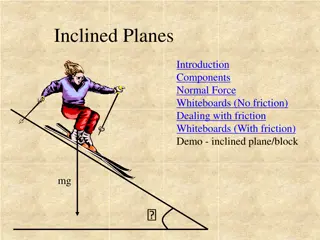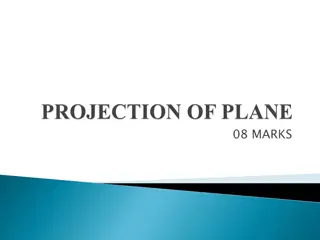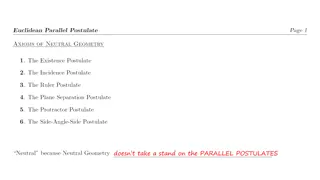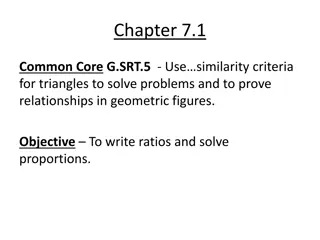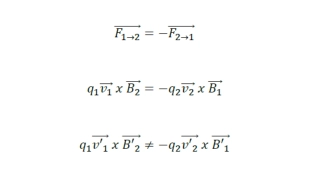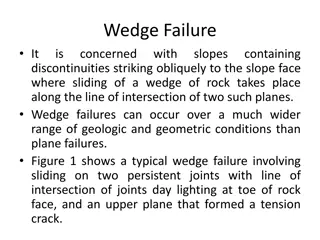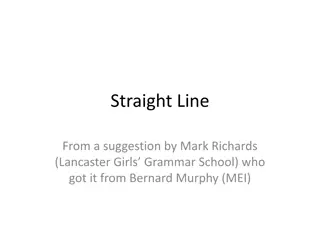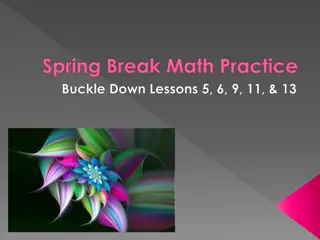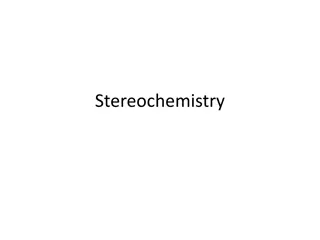Geometric Postulates and Theorems Relating Points, Lines, and Planes
This section introduces the postulates and theorems related to points, lines, and planes in geometry. It covers basic assumptions, postulates about lines and planes, and theorems about intersections. The concept of "exactly one" and "one and only one" is emphasized, highlighting the unique relationships between points, lines, and planes. Understanding these principles is crucial for geometry proofs and problem-solving.
Uploaded on Sep 30, 2024 | 0 Views
Download Presentation

Please find below an Image/Link to download the presentation.
The content on the website is provided AS IS for your information and personal use only. It may not be sold, licensed, or shared on other websites without obtaining consent from the author. Download presentation by click this link. If you encounter any issues during the download, it is possible that the publisher has removed the file from their server.
E N D
Presentation Transcript
Section 1-5 Postulates and Theorems Relating Points, Lines, and Planes
Recall that we have accepted, without proof, the following four basic assumptions. ________________ The Segment Addition Postulate ______________ The Ruler Postulate ________________ The Angle Addition Postulate ______________ The Protractor Postulate These postulates deal with segments, lengths, angles, and measures. The following five basic assumptions deal with the way points, lines, and planes are related.
Postulate 5 A line contains at least _________ points; a plane contains at least ___________ points not all in one line; space contains at least __________ points not all in one plane. four two three Postulate 6 Through any two points there is exactly __________ line. one
Postulate 7 Through any three points there is at least __________ plane, and through any three noncollinear points there is exactly _________ plane. one one Postulate 8 If two points are in a plane, then the _________ that contains the points is in that plane. line
Postulate 9 If two planes intersect, then their intersection is a ____________. line proved Important statements that are ___________ are called ________________. In classroom Exercise 1 you will see how Theorem 1-1 follows from postulates. In Written Exercise 20 you will complete an argument that justifies Theorem 1-2. You will learn about writing proofs in the next chapter. theorems
Theorem 1-1 If two lines interest, then they intersect in exactly ______ point. one Theorem 1-2 Through a line and a point not in the line there is exactly one __________. plane Theorem 1-3 If two lines intersect, then exactly one __________ contains the lines. plane
The phrase exactly one appears several times in the postulates and theorems of this section. The phrase one and only one has the same meaning. For example, here is another correct form of Theorem 1-1; If two lines intersect, then they intersect in one and only one __________. point The theorem states that a point of intersection __________ (there is at least one point of intersection) and the point of intersection is __________ (no more than one such point exists). exists unique
Examples: Classify each statement as true or false. 1. A postulate is a statement assumed to be true without proof. TRUE 2. The phrase exactly one has the same meaning as the phrase one and only one. TRUE
3. Three points determine a plane. FALSE 4. Through any two points there is exactly one plane. FALSE 5. Through a line and a point not on the line there is one and only one plane. TRUE
HOMEWORK: page 25 #1-16 all


